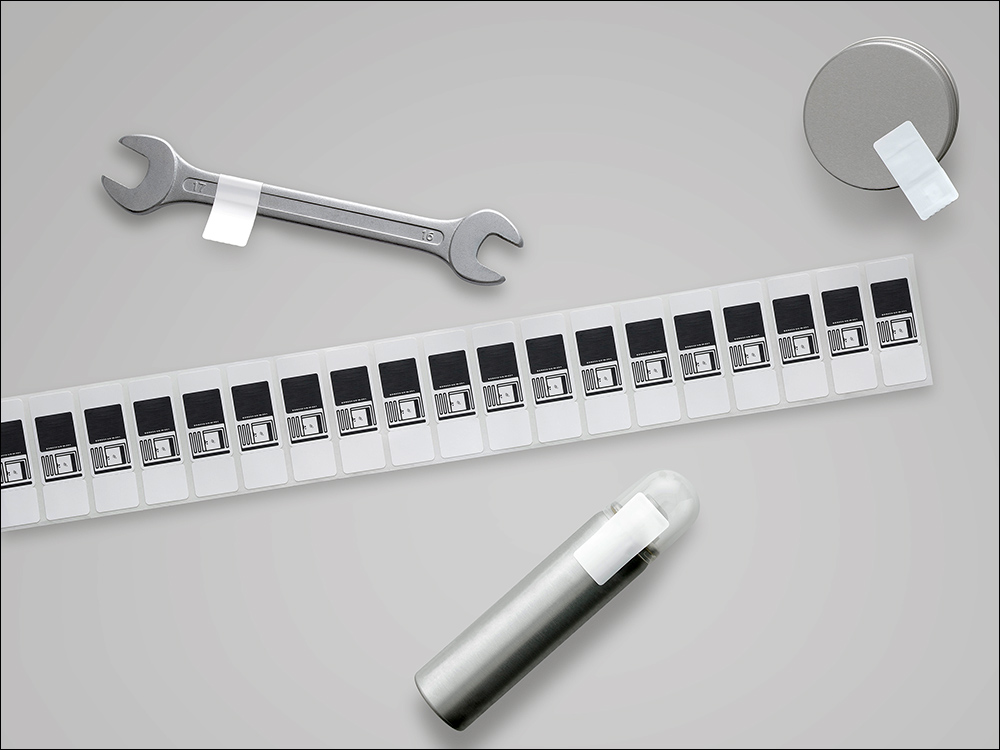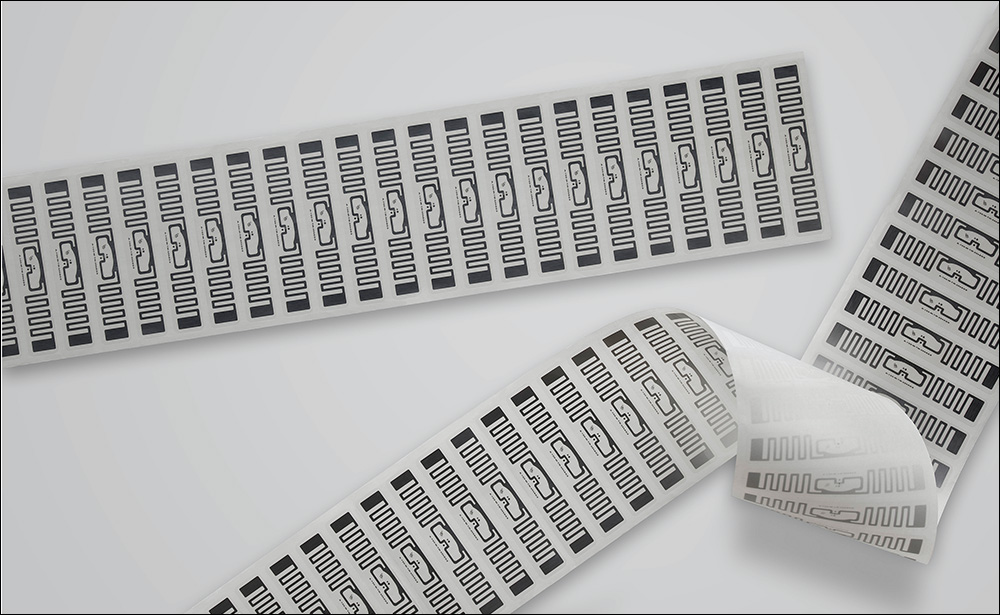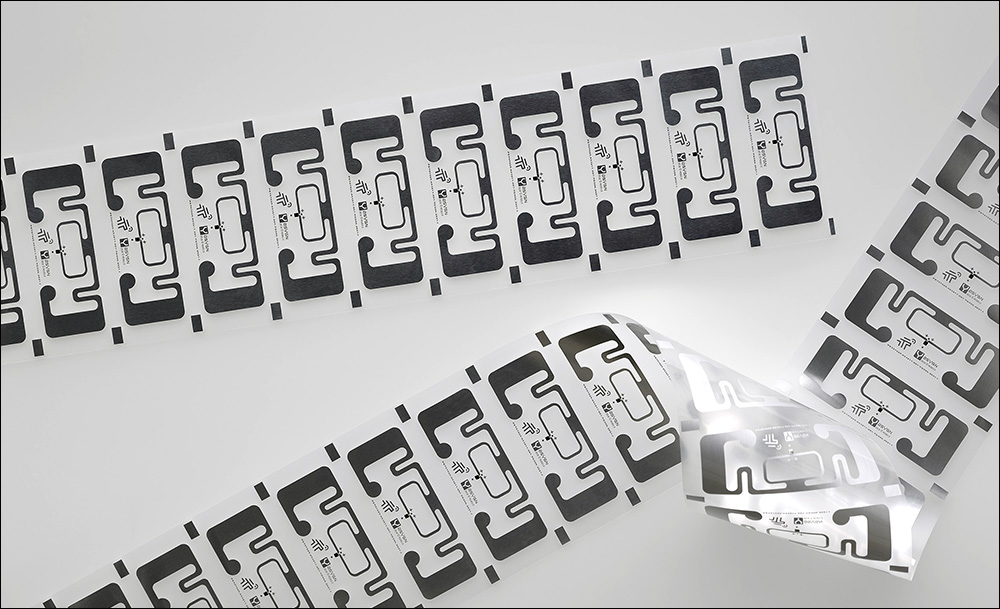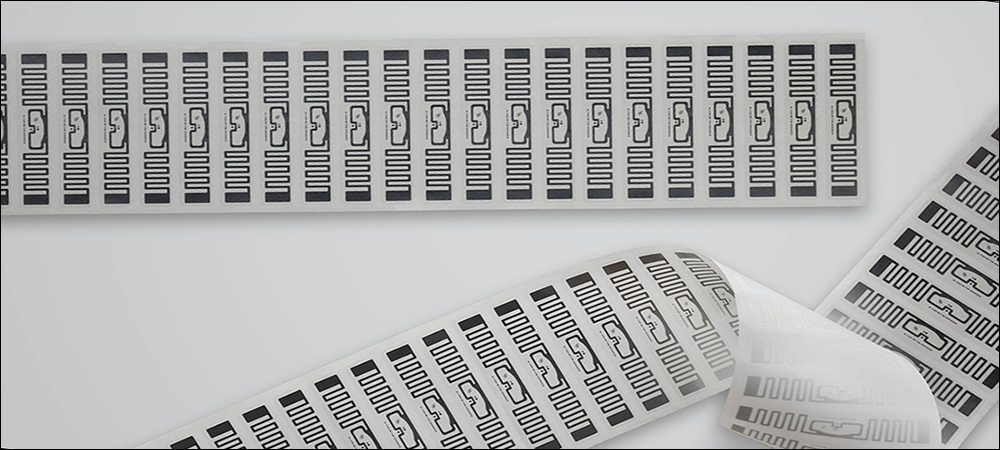- Foldable On-Metal Flag Tag
- Sustainable Tags with Laser-Cut Antenna
- Small Inlay and Passive Sensor for Temperature, Strain or Light
RFID tag company Tageos, located in Montpelier, France, has released a set of new UHF RFID tags designed to broaden smart label applications into the food, quick-serve restaurant, retail and aviation markets. With the new products, Tageos says it intends to address the current demand for new sustainable tags. “Our focus is on tags and extending our portfolio,” says Karin Fabri, Tageos’ chief marketing officer.
The new products are intended for a variety of applications that have experienced challenges with existing RFID solutions. The inlays include one designed for use on metal surfaces, as well as a battery-free sensing tag, a very small inlay that meets the ARC specifications, and a sustainable new version of a high-performance ETSI tag. The product portfolio was released in May at the RFID Journal LIVE! 2022 conference and exhibition.
Tageos reports that it has experienced high growth rates throughout the past several years. In March, the company’s majority share was acquired by Italian print company Fedrigoni Group (see Fedrigoni Becomes Tageos Majority Shareholder). The acquisition enables Fedrigoni to expand its label products to include UHF RFID and Near Field Communication (NFC) tags for intelligent labels aimed at traceability and customer engagement. According to Tageos, the acquisition will help it maintain its growth rate for RFID-based products, with a more global footprint and more sustainable products.

The EOS-232 U8
Foldable On-Metal Flag Tag
Tageos’ new EOS-232 U8 foldable inlay measures 31.4 millimeters by 18 millimeters (1.24 inches by 0.7 inch). The inlay is built with a substrate and antenna design so that it can operate on or near metal surfaces. The tag can be attached directly to metal, with the folded portion standing away from the surface, like a flag. In that way, the antenna is separated from the metal and extends the tag’s read distance. The foldable section spans approximately one half of the overall inlay size.

Karin Fabri
The new tag is intended for use in a range of on-metal applications in retail segments, Fabri says, which include beauty, cosmetics, electronics and groceries, as well as in other sectors, such as pharmaceuticals, healthcare, automotive and aviation. The on-metal flag inlay leverages NXP’s UCODE 8 IC, with a pre-serialized 96-bit Electronic Product Code (EPC) and a brand identifier. This enables the flag tag to be used in electronic article surveillance (EAS) applications. The inlay is available now in large quantities for both dry and wet polypropylene plastic-face formats.
The company has also developed a tag specifically aimed at the food and quick service restaurant (QSR) industries. The EOS-450 M730 is based on an antenna design dictated by the Auburn University RFID Lab‘s ARC Specification Z. It is sized at 72 millimeters by 10 millimeters (2.8 inches by 0.4 inch) and is designed to transmit on a wide variety of surfaces. It contains an Impinj M730 chip and 128 bits of EPC memory.
The EOS-450 M730 inlays are primarily aimed at applications related to the food and QSR sector, and they can track perishable foods and other supplies for inventory management and ingredient tracing. Other application areas include the retail, logistics and industrial segments, for inventory-management purposes. The inlays are available now, Fabri reports, in dry, wet and paper-face delivery formats in large quantities.

The EOS-450 M730
Sustainable Tags with Laser-Cut Antenna
In addition, Tageos is extending a sustainable product line known as Zero Max to include the new EOS-241 U9 Zero Max ETSI inlay. The EOS Zero product family, released at RFID Journal LIVE! 2021, is designed to provide high read performance, while reducing environmental impact by using FSC-certified paper as a substrate (see Tageos Launches Sustainable RFID Inlays with NXP, Impinj ICs). The EOS Zero Max tags also employ antennas from All4Labels, using eRFID precision laser-cutting rather than chemical-based laser processes.
The EOS-241 U9 Zero Max ETSI is the sustainable version of the EOS-241 U9. Both 241 inlays are designed for inventory management in the retail apparel, supply chain, logistics, pharmaceutical and healthcare sectors. However, Fabri says, the EOS-241 U9 Zero Max ETSI provides a plastic-free, conflict-free material, without heavy metals and with a low carbon-footprint.
Other new products include the EOS-340 U9, designed to replace “dual-dipole” UHF products based on discontinued IC families, which comes with NXP’s UCODE 9 IC. The new inlay provides long read ranges when applied to plastic or cardboard surfaces, regardless of tag orientation. Thus, the tag is expected to be adopted for use at sites where products move through portals or on conveyors or with other applications for which tag orientation can vary, but for which high read accuracy is imperative. That includes inventory visibility, supply chain management and parts management in the automotive, industrial manufacturing and logistics industries.

The EOS-840 Sensor
Small Inlay and Passive Sensor for Temperature, Strain or Light
At 44 millimeters by 20 millimeters (1.7 inches by 0.8 inch), the EOS-261 M730 FCC RFID inlay is reportedly the smallest inlay to meet ARC performance specifications. Auburn’s RFID Lab tests tags to identify quality requirements for customer use cases. This inlay leverages the Impinj M700 IC, Fabri says, adding, “It combines high performance and durability on various surfaces.” The inlay is designed to operate well under Federal Communications Commission regulations for use in retail apparel, as well as with accessories, consumer electronics, home goods and toys. It can also be employed in logistics, automotive and industrial manufacturing.
Lastly, Tageos released a battery-free sensor UHF inlay known as the EOS-840 Sensor, based on Asygn‘s AS321x sensor chip. The inlay comes in three versions and is expected to be used for detecting temperature, strain or ambient light. The tag provides condition monitoring for the cold supply chain, for grocery and agricultural management, and for product monitoring. For industrial use cases, as well as for automotive and construction, it can provide predictive maintenance, among other applications. Tageos’s goal, Fabri says, is to further diversify and broaden its product portfolio, while supporting customer and market requirements worldwide.
Key Takeaways:
- Following its acquisition by paper packaging and labels company Fedrigoni Group, Tageos continues to diversity its product portfolio.
- The products will enable new RFID applications in the retail, industrial, automotive and aviation markets.


